RR is a american film of genre Documentary directed by James Benning
RR (2007)

If you like this film, let us know!
RR (aka Railroad) is a 2007 film by American, James Benning. Shot in 16 mm film, as most of Benning's films are, RR is another in Benning's series of American experimental landscape films; this one focusing on trains and their surrounding environs. In Railroad, Benning explores themes of American consumerism and overconsumption in what Benning calls a "collaboration" with the trains themselves.
The film is an exercise in minimalist restraint. Basically it is a series of static shots of trains. There is an empty frame, the train enters, then it passes and leaves. The obsessive gaze of Benning's fixed static frame causes the viewer to wait and watch, obsessing like train fanatic Benning does, on the imagery of the locomotive and the exploration of the random colors of its cars, the machinery and the various American landscapes the trains are surrounded by.
^ Peranson, Mark. "Interviews | Trainspotting with James Benning". Cinema Scope.
^ "The end of the line: Trainspotting America with James Benning's RR" SF Bay Guardian, by Mark Peranson, May 7, 2008
Comments
Leave comment :
Suggestions of similar film to RR
There are 1 films with the same director, 8973 with the same cinematographic genres, 7476 films with the same themes (including 2 films with the same 3 themes than RR), to have finally 70 suggestions of similar films.If you liked RR, you will probably like those similar films :

Taken for a Ride (1996)
, 55minutesOrigin USA
Genres Documentary
Themes Environmental films, Transport films, Films about automobiles, Rail transport films, Documentary films about business, Documentary films about environmental issues, Documentary films about technology, Road movies
Rating78%





Taken for a Ride begins with interviews on the inefficiencies and congestion on Los Angeles' highways. Next, the film displays a variety of archival footage on streetcar systems around the United States, demonstrating that streetcars were a widespread and efficient means of transportation. The film continues into a description of the General Motors streetcar conspiracy, starting with a history of National City Lines and Pacific City Lines and General Motors' investment in both companies. The film builds the argument that streetcar systems purchased by these companies were deliberately sabotaged through service reductions and fare increases, then replaced with profitable, less convenient, bus systems. Next, the film makes a connection between this conspiracy and the construction of the Interstate Highway System and the suburbanization of America in the face of the Highway revolts in the 1960s and 1970s. The film ends with footage of the reduction of Philadelphia's trolleybus system at the time of filming.
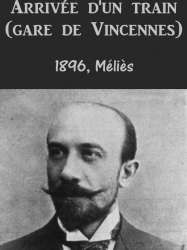
Directed by Georges Méliès
Origin France
Genres Documentary
Themes Transport films, Rail transport films, Documentary films about technology
Rating49%






What is the Electric Car? (2010)
Origin USA
Genres Documentary
Themes Environmental films, Transport films, Films about automobiles, Documentary films about environmental issues, Documentary films about technology, Road movies
Actors Fabio Lanzoni, Alexandra Paul, Ed Begley Jr.
Rating71%






Origin USA
Genres Documentary
Themes Transport films, Rail transport films, Documentary films about technology
Rating48%





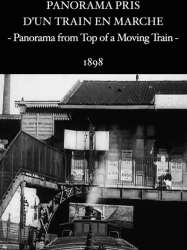
Directed by Georges Méliès
Origin France
Genres Documentary
Themes Transport films, Rail transport films
Rating56%





Comme son titre l'indique, ce film présente le panorama pris d'un train en marche, depuis le toit d'un wagon.
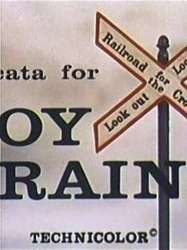
Toccata for Toy Trains (1957)
Genres Documentary
Themes Transport films, Rail transport films
Rating71%





Courmétrage réalisé en 1957 par Charles et Ray Eames, un des nombreux films que le couple a fait pendant leur carrière
 , 55minutes
, 55minutesGenres Documentary
Themes Environmental films, Seafaring films, Transport films, Documentary films about business, Documentary films about environmental issues
The area was originally considered worthless by European-Australian settlers, who fenced it off and abandoned it. The town was established around the start of the 20th century by German immigrant settlers. Its population increased after the first and second World Wars due to the government's policies of subsidies to encourage settlement by veterans. The people of Rainbow have struggled to eke out an existence for more than three generations, with global economics and government policy compounding the difficulties of marginal farming. The film draws from home movies from the 1940s to portray the people in this town.

Sun Come Up (2011)
, 38minutesOrigin USA
Genres Documentary
Themes Environmental films, Seafaring films, Transport films, Documentary films about environmental issues, Documentary films about nature, Disaster films
Rating68%





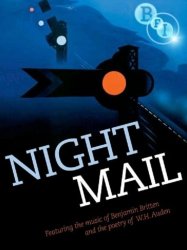
Night Mail (1936)
, 26minutesDirected by Harry Watt
Origin United-kingdom
Genres Documentary
Themes Transport films, Rail transport films, Documentary films about technology
Actors John Grierson
Rating67%





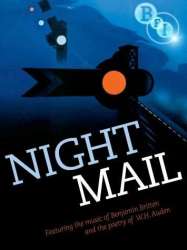
The Way to the Sea (1936)
Origin United-kingdom
Genres Documentary
Themes Transport films, Rail transport films, Documentary films about technology
Actors Norman Wooland
Rating59%





 Connection
Connection